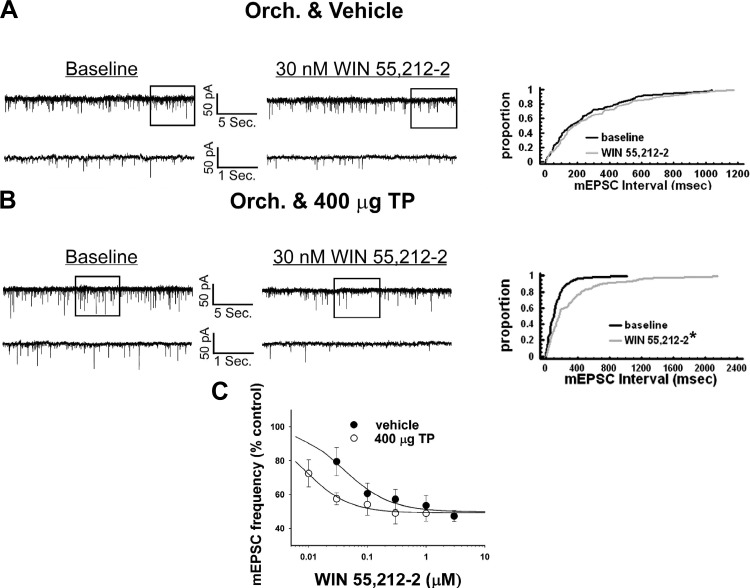Fig. 8.
TP potentiates CB1 receptor agonist-induced decreases in miniature excitatory postsynaptic current (mEPSC) frequency. A and B: membrane current traces under baseline (left) and in the presence of 30 nM (R)-(+)-{2,3-dihydro-5-methyl-3-(4-morpholinylmethyl)pyrrolo[1,2,3-de]-1,4-benzoxazin-6-yl}-1-naphthalenylmethanone mesylate (WIN 55,212-2; middle) and their corresponding cumulative distributions (right) in recordings from vehicle- (A) and TP-treated animals (B). C: composite dose-response curves for the decrease in mEPSC frequency produced by WIN 55,212-2 in POMC neurons from orchidectomized, vehicle-treated (●), and TP-treated (○) animals. The curves were fit via logistic equation to the data points. Symbols represent means and vertical lines 2 SE (n = 3–12) of the mEPSC frequency seen with varying concentrations of WIN 55,212-2 that were normalized to their respective control values. Note the prominent TP-induced leftward shift in the agonist dose-response curve. *P < 0.05, Kolmogorov-Smirnov test.

